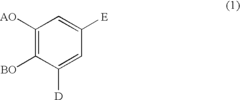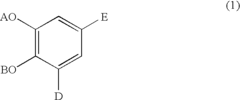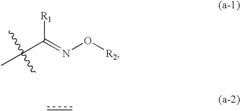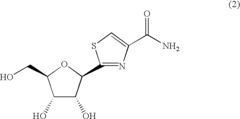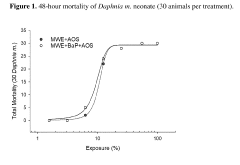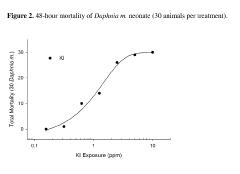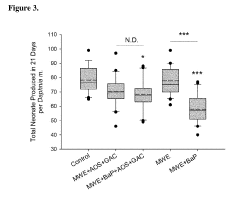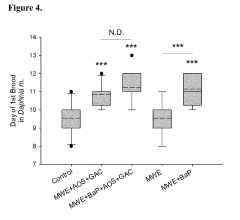The Evolution of Carbon Tetrachloride in Scientific Research
CCl4 Research History and Objectives
Carbon tetrachloride (CCl4) has a rich history in scientific research, dating back to its discovery in 1839 by French chemist Henri Victor Regnault. Initially, it was primarily used as a solvent and cleaning agent due to its non-flammable properties. The evolution of CCl4 in scientific research has been marked by significant milestones and shifting perspectives on its applications and environmental impact.
In the early 20th century, CCl4 gained prominence in various industrial and commercial applications. Its use as a fire extinguishing agent, dry-cleaning solvent, and refrigerant became widespread. This period saw extensive research into its chemical properties and potential uses, leading to its incorporation in numerous products and processes.
The 1930s and 1940s witnessed a surge in CCl4 research related to its role as a precursor in the production of chlorofluorocarbons (CFCs). Scientists explored its reactions and transformations, paving the way for the development of compounds that would later revolutionize refrigeration and aerosol technologies.
However, the 1970s marked a turning point in CCl4 research. Environmental studies began to reveal its ozone-depleting properties and potential health hazards. This discovery shifted the focus of scientific inquiry towards understanding its atmospheric chemistry and environmental persistence. Researchers aimed to quantify its impact on the ozone layer and develop alternatives to its use in various applications.
The 1980s and 1990s saw intensified efforts to phase out CCl4 usage, driven by international agreements such as the Montreal Protocol. Scientific research during this period concentrated on developing substitutes and improving detection methods for trace amounts of CCl4 in the environment. Atmospheric scientists worked to model its global distribution and long-term effects on climate.
In recent decades, CCl4 research has evolved to focus on remediation techniques for contaminated sites and the development of more sensitive analytical methods for its detection. Environmental monitoring has become a key objective, with scientists tracking global emissions and investigating unexpected sources of CCl4 release.
Current research goals include understanding the biogeochemical cycling of CCl4 in various ecosystems, assessing its long-term impact on human health and the environment, and exploring potential natural sources of CCl4 production. Scientists are also investigating its role in atmospheric chemistry and its interactions with other pollutants.
The evolution of CCl4 in scientific research reflects a broader shift in environmental awareness and the scientific community's responsibility in addressing global challenges. From its initial promise as a versatile chemical to its current status as a regulated substance, CCl4 continues to be a subject of study, with ongoing efforts to mitigate its environmental impact and fully understand its complex interactions in the Earth's systems.
Scientific Applications and Demand
Carbon tetrachloride has played a significant role in scientific research and industrial applications since its discovery in the mid-19th century. The demand for this compound has evolved dramatically over time, reflecting changes in scientific understanding, technological advancements, and environmental concerns.
In the early 20th century, carbon tetrachloride found extensive use as a solvent in various scientific applications. Its non-flammability and excellent solvency properties made it particularly valuable in organic chemistry research. Scientists utilized it for extracting and purifying organic compounds, as well as in the synthesis of new molecules. The pharmaceutical industry also relied heavily on carbon tetrachloride for drug development and production processes.
The compound's unique physical properties, such as its high density and low viscosity, led to its adoption in analytical chemistry. Researchers employed carbon tetrachloride in spectroscopic studies, particularly in infrared spectroscopy, where it served as a transparent medium for sample analysis. Its use in nuclear magnetic resonance (NMR) spectroscopy also became prevalent, enabling scientists to elucidate molecular structures and dynamics.
In the field of materials science, carbon tetrachloride found applications in the study of polymers and plastics. Its ability to dissolve a wide range of organic materials made it an ideal solvent for polymer characterization and analysis. Additionally, researchers utilized it in the development of new materials, including adhesives, coatings, and synthetic fibers.
The demand for carbon tetrachloride in scientific research extended to environmental studies. Scientists employed it as a tracer compound to investigate atmospheric and oceanic circulation patterns. Its stable nature and low reactivity in the atmosphere made it an excellent choice for tracking global air movements and studying climate change.
However, the scientific community's understanding of carbon tetrachloride's environmental impact evolved over time. As awareness of its ozone-depleting properties grew, researchers shifted their focus towards finding alternatives and studying its effects on the stratosphere. This led to a decline in its use for certain applications but simultaneously sparked new areas of research in atmospheric chemistry and environmental science.
In recent years, the scientific demand for carbon tetrachloride has primarily centered around its role in environmental monitoring and remediation studies. Researchers continue to investigate its persistence in the environment, develop methods for its detection and removal from contaminated sites, and explore potential natural sources of the compound.
While the widespread use of carbon tetrachloride in scientific research has diminished due to environmental regulations, it remains an important subject of study in fields such as green chemistry, where scientists seek to develop safer and more sustainable alternatives to traditional solvents and reagents.
Current Challenges in CCl4 Usage
Despite its historical significance in scientific research, carbon tetrachloride (CCl4) faces numerous challenges in its contemporary usage. The primary concern stems from its severe environmental impact, particularly its role in ozone depletion. CCl4 is classified as an ozone-depleting substance under the Montreal Protocol, leading to strict regulations and phase-out programs worldwide. This has significantly limited its availability and application in scientific research.
The toxicity of CCl4 presents another major challenge. Exposure to this compound can cause severe liver and kidney damage, as well as potential carcinogenic effects. These health risks necessitate stringent safety protocols in laboratory settings, increasing the complexity and cost of research involving CCl4. Many institutions have implemented strict handling procedures or outright bans on its use, further constraining its application in scientific studies.
Finding suitable alternatives to CCl4 has proven challenging in certain research areas. While less harmful solvents have been identified for many applications, some unique properties of CCl4, such as its tetrahedral molecular geometry and specific reactivity, make it difficult to replace in certain experimental setups. This has led to a dilemma where researchers must balance the scientific value of using CCl4 against environmental and health concerns.
The legacy contamination from historical CCl4 usage poses ongoing challenges. Many sites, particularly those associated with industrial production or extensive research activities, still struggle with soil and groundwater contamination. Remediation efforts are often complex and costly, requiring advanced techniques to remove or neutralize CCl4 in the environment. This persistent contamination serves as a reminder of the long-term consequences of CCl4 usage and underscores the importance of responsible chemical management.
Regulatory compliance and international restrictions have created additional hurdles for researchers. The need for special permits, extensive documentation, and adherence to strict disposal protocols has increased the administrative burden associated with CCl4 research. These regulatory challenges, combined with the ethical considerations of using a known environmental hazard, have led many scientists to reconsider the use of CCl4 in their work, even in cases where suitable alternatives are not readily available.
Modern CCl4 Research Techniques
01 Production and purification of carbon tetrachloride
Various methods for producing and purifying carbon tetrachloride are described. These include chemical synthesis processes, distillation techniques, and purification methods to obtain high-quality carbon tetrachloride for industrial and laboratory use.- Production and purification of carbon tetrachloride: Various methods for producing and purifying carbon tetrachloride are described. These include chemical synthesis processes, distillation techniques, and purification methods to obtain high-quality carbon tetrachloride for industrial and laboratory use.
- Applications of carbon tetrachloride in chemical processes: Carbon tetrachloride is utilized in various chemical processes, including as a solvent, reagent, or intermediate in the production of other chemicals. Its applications span across different industries, such as pharmaceuticals, agrochemicals, and materials science.
- Environmental and safety considerations: Due to its environmental impact and health hazards, there are methods and systems developed for the safe handling, storage, and disposal of carbon tetrachloride. This includes techniques for detecting leaks, minimizing exposure, and treating contaminated areas.
- Alternatives and replacements for carbon tetrachloride: Research into finding safer alternatives to carbon tetrachloride for various applications is ongoing. This includes developing new compounds or processes that can replace carbon tetrachloride in industrial and laboratory settings while maintaining similar effectiveness.
- Analytical methods involving carbon tetrachloride: Carbon tetrachloride is used in various analytical methods and techniques. This includes its use as a solvent in spectroscopy, chromatography, and other analytical procedures for the identification and quantification of different substances.
02 Applications of carbon tetrachloride in chemical processes
Carbon tetrachloride is utilized in various chemical processes, including as a solvent, reagent, or intermediate in organic synthesis. It plays a role in the production of other chlorinated compounds and in certain industrial applications.Expand Specific Solutions03 Environmental and safety considerations
Due to its environmental impact and health hazards, research focuses on alternatives to carbon tetrachloride and methods for its safe handling, storage, and disposal. This includes developing detection systems and remediation techniques for contaminated sites.Expand Specific Solutions04 Historical uses and phaseout
Carbon tetrachloride was historically used in fire extinguishers, dry cleaning, and as a refrigerant. However, due to its ozone-depleting properties and toxicity, its use has been phased out in many applications, leading to research on substitutes and alternative technologies.Expand Specific Solutions05 Analytical and research applications
Carbon tetrachloride continues to have limited use in analytical chemistry and research settings. It serves as a solvent in spectroscopy, a standard in certain analytical methods, and as a model compound in environmental and toxicological studies.Expand Specific Solutions
Key Institutions in CCl4 Studies
The evolution of carbon tetrachloride in scientific research reflects a mature industry with a stable market size. The technology has progressed through various developmental stages, from its initial discovery to widespread industrial use, and now to more specialized applications due to environmental concerns. Key players like Central South University, CITIC Dicastal, and Occidental Chemical Corp. have contributed significantly to its research and development. The industry has seen a shift towards finding safer alternatives and developing remediation techniques, with companies like Bayer HealthCare and Arena Pharmaceuticals exploring new applications in pharmaceuticals. Academic institutions such as MIT and the University of Tokyo continue to play crucial roles in advancing the understanding of carbon tetrachloride's properties and potential uses.
University of Tokyo
Massachusetts Institute of Technology
Breakthrough CCl4 Studies Analysis
- A dihydroxyphenyl derivative represented by a specific chemical formula, which acts as a hepatoprotective and therapeutic agent for liver diseases, is developed, offering improved bioavailability and safety with enhanced hepatoprotective effects.
- A method and system using a filter material comprising a porous carbon support layer and silicate wool or glass wool with distributed halogens or halides, where an electric current is passed through the filter material to adsorb and decompose hormonal contaminants from aqueous effluent streams.
Environmental Impact of CCl4
Carbon tetrachloride (CCl4) has had a significant environmental impact since its widespread use began in the early 20th century. Initially employed as a solvent, cleaning agent, and refrigerant, CCl4 was later discovered to be a potent ozone-depleting substance and greenhouse gas. Its release into the atmosphere has contributed to the depletion of the ozone layer, particularly in the stratosphere.
The environmental effects of CCl4 are far-reaching and long-lasting. In the atmosphere, it can persist for decades, with an estimated atmospheric lifetime of 26 years. This longevity allows CCl4 to accumulate and spread globally, affecting ecosystems far from its point of release. The compound's ability to catalyze ozone destruction is particularly concerning, as it can continue to deplete ozone long after its initial emission.
In aquatic environments, CCl4 can contaminate both surface and groundwater. Its high density causes it to sink in water bodies, potentially forming dense non-aqueous phase liquids (DNAPLs) that are difficult to remediate. Contamination of drinking water sources poses risks to human health and aquatic ecosystems. Marine life, particularly in coastal areas near industrial sites, can be adversely affected by CCl4 pollution.
Soil contamination is another significant concern. CCl4 can persist in soil for extended periods, potentially leaching into groundwater and affecting soil microorganisms. This persistence can lead to long-term ecological impacts and challenges in land remediation efforts.
The global response to CCl4's environmental impact has been substantial. The Montreal Protocol, implemented in 1989, phased out the production and consumption of CCl4 along with other ozone-depleting substances. This international agreement has been largely successful in reducing atmospheric concentrations of CCl4, although illegal production and emissions remain a challenge.
Despite the phase-out, legacy contamination from historical use continues to pose environmental challenges. Remediation efforts at contaminated sites are ongoing, employing various technologies such as pump-and-treat systems, in-situ chemical oxidation, and bioremediation. These efforts aim to mitigate the long-term environmental impacts of CCl4 contamination.
Research into the environmental fate and transport of CCl4 continues to be crucial for understanding its long-term impacts and developing effective mitigation strategies. Monitoring programs track atmospheric concentrations and identify potential new sources of emissions. These ongoing efforts are essential for maintaining the progress made in reducing the environmental impact of CCl4 and ensuring the continued recovery of the ozone layer.
CCl4 Alternatives in Science
The scientific community has been actively seeking alternatives to carbon tetrachloride (CCl4) due to its ozone-depleting properties and potential health hazards. Several compounds have emerged as viable substitutes in various research applications, each offering unique advantages and limitations.
Chloroform (CHCl3) has become a popular alternative in many laboratory procedures. It shares similar solvent properties with CCl4 but poses less environmental risk. Chloroform is widely used in organic synthesis, extraction processes, and as a solvent for NMR spectroscopy. However, its toxicity and potential carcinogenicity require careful handling and proper safety measures.
Dichloromethane (CH2Cl2) has also gained prominence as a CCl4 replacement. It is extensively used in pharmaceutical research, polymer processing, and as a paint stripper. Dichloromethane offers excellent solvency for many organic compounds and has a lower boiling point than CCl4, making it suitable for low-temperature reactions. Nevertheless, its volatility and potential health effects necessitate proper ventilation and personal protective equipment.
Tetrachloroethylene (C2Cl4), also known as perchloroethylene, has found applications in dry cleaning and metal degreasing. In scientific research, it serves as a non-polar solvent and a precursor in organic synthesis. While less harmful to the ozone layer than CCl4, tetrachloroethylene still requires careful handling due to its potential carcinogenicity.
Trichloroethylene (C2HCl3) has emerged as another alternative, particularly in vapor degreasing and as an extraction solvent. It exhibits good solvency for a wide range of organic compounds and is used in analytical chemistry and materials science. However, its use is increasingly restricted due to environmental and health concerns.
In recent years, there has been a shift towards more environmentally friendly alternatives. Supercritical carbon dioxide (scCO2) has gained attention as a green solvent for extractions and chemical reactions. It offers the advantage of being non-toxic, non-flammable, and easily recyclable. However, the high-pressure equipment required for its use can be a limiting factor in some research settings.
Ionic liquids have also emerged as promising alternatives to traditional organic solvents. These low-melting-point salts offer tunable properties and can be designed for specific applications. Their negligible vapor pressure and potential for recycling make them attractive from an environmental perspective. However, their higher cost and potential toxicity issues require further investigation.
As research continues, the scientific community is exploring novel solvents and methodologies to replace CCl4 and other harmful chlorinated solvents. This ongoing effort reflects the broader trend towards sustainable and environmentally responsible practices in scientific research.
